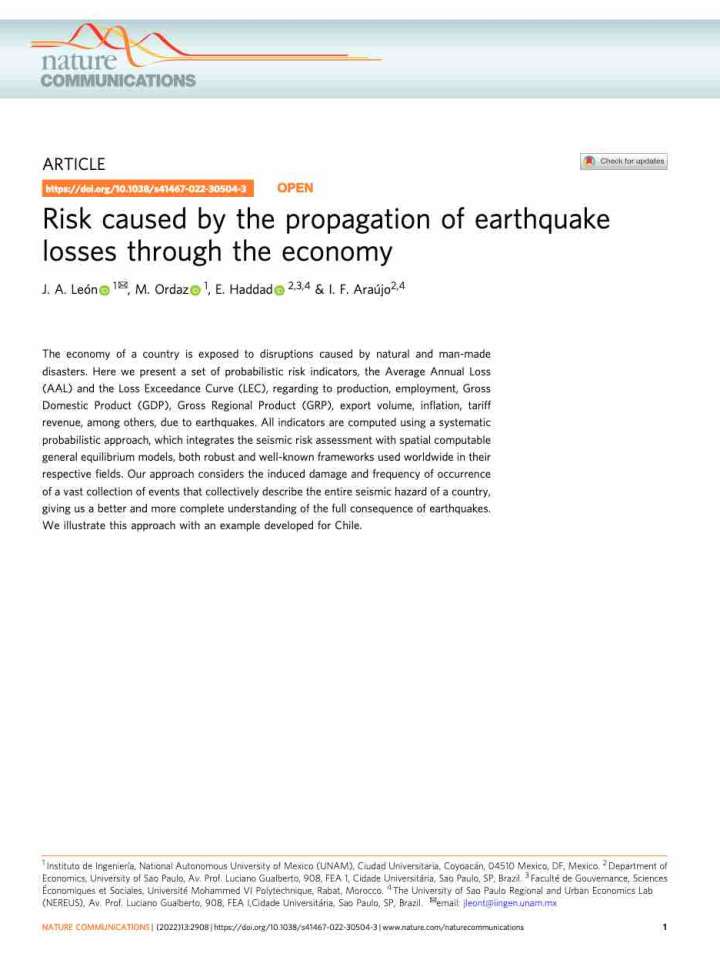Risk caused by the propagation of earthquake losses through the economy
The economy of a country is exposed to disruptions caused by natural and man-made disasters. This study presents a set of probabilistic risk indicators, considering the induced damage and frequency of occurrence of earthquakes, using the example of Chile. There is evidence that economic production losses caused by disasters, on occasion called indirect losses, can sometimes be much more significant than those produced by physical damage.
However, it is not easy to account for the economic consequences of earthquakes with historical information alone because these catastrophic events are infrequent, so that relevant information is scarce, and it is not always easy to distinguish between direct and indirect losses. Given this, the paper presents an approach to integrate, systematically, the probabilistic seismic risk, and the Computable General Equilibrium (CGE) modeling frameworks to the estimation of higher-order losses that take into account that: natural events—earthquakes in our case—take place as a stochastic process in time; that frequency of occurrence of events matters for measuring risk; and that there are links between the level of physical damage to economic components and the reduction of capital stock.
Explore further
